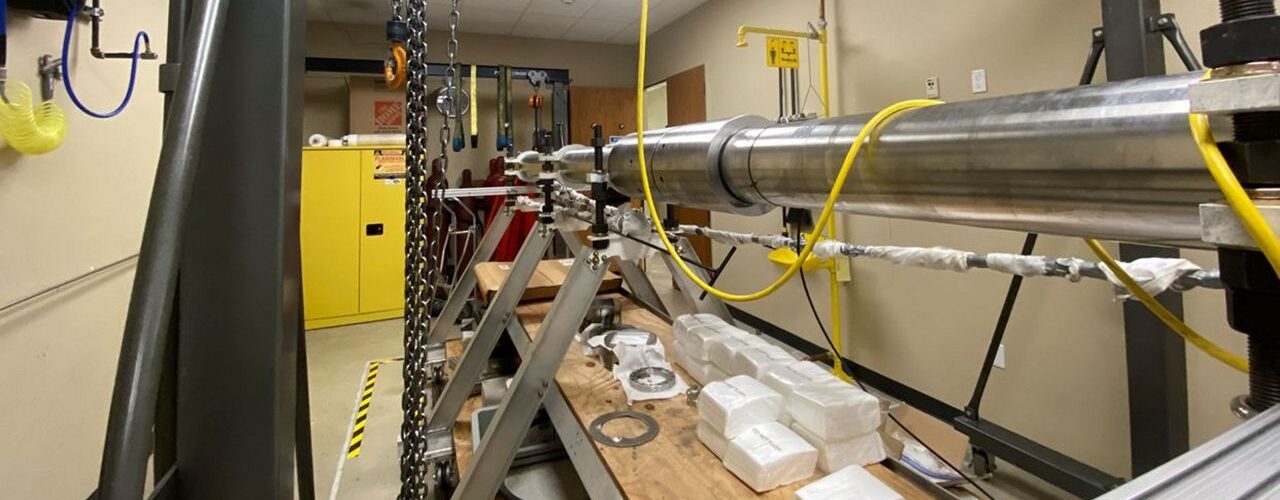As more attention and resources shift toward clean energy solutions, industry leaders are increasingly interested in hydrogen. But even the resource’s biggest advocates acknowledge its major challenges, both technologically and in terms of safety.
Above all, hydrogen is attractive because it’s a clean energy source, according to Subith Vasu, a professor at the University of Central Florida’s department of Mechanical and Aerospace Engineering.
In his HiPER-STAR lab at UCF, Vasu and the students he oversees run experiments, assessing how hydrogen might react in different situations and in combination with different fuels. The Department of Energy granted them $800,000 in 2021 to advance hydrogen fuel research, part of the Biden administration’s goal of reaching 100% clean energy by 2035.
But that path to clean energy comes with major challenges, Vasu said.
“The only benefit that hydrogen has over any other fuel is that it doesn’t have carbon. But in terms of everything else, it’s actually not better than the other fuels,” Vasu said. “Hydrogen is extremely flammable. It’s very, very difficult to handle.”
In fact, Vasu said he believes hydrogen to be the most difficult fuel to handle in terms of safety, second only to nuclear.
“It’s extremely prone to leaking, and almost every leak can lead to a fire. And the fact that you cannot see the fire,” Vasu said. “Typically, when you imagine a fire, you have those yellow, orange flames. But with hydrogen, it’s colorless.”
Vasu estimates globally, nearly a trillion dollars has been invested into hydrogen fuel research, with the United States likely taking the lead. But so far, NASA and other space industry leaders have been most successful at using hydrogen, he said.
“The launchpad sits far away from any civilization, and it’s a remote place. Whatever is happening in space, there are no neighbors or anybody,” Vasu said. “So, in case something goes wrong, there’s not much risk for the public.”
Conversely, producing and storing hydrogen in proximity to where lots of people live would be more dangerous, Vasu said.
“I would say that that’s not probably a good idea because hydrogen is very, very flammable,” Vasu said. “And there’s another aspect to hydrogen, which is that it’s explosive. … With hydrogen, you have the risk of detonation.”
Vasu said it’s exactly why scientists and engineers are working in controlled environments to study the powerful fuel, and how it might be more safely and effectively used, moving forward.
“I hope that the technology becomes realizable in my lifetime,” Vasu said. “I’m very optimistic about it. And we are very proud of our work. We are very proud of our students who are working on this. … Overall, we believe in hydrogen.”
'Carbon-Free' Challenges
Ultimately, hydrogen’s two major challenges, according to Vasu, are the current lack of technology to make it work for everyday use, combined with an overall lack of enough hydrogen throughout our world.
“Even if the technology were to be available, we don’t have enough hydrogen to use [it],” Vasu said. “So we need to have both. We need to dial up the technologies that can efficiently convert hydrogen into whatever useful form we want … and we need to make hydrogen in a carbon-neutral way.”
Although hydrogen itself doesn’t emit carbon dioxide — making it an attractive, clean energy source — the majority of hydrogen currently being produced still relies on carbon-intensive processes, according to the Natural Resources Defense Council (NRDC).
That means ultimately, there’s no net benefit to using hydrogen above any other type of fuel, at least not yet, Vasu said.
“Everybody wants to get away from carbon because a byproduct of carbon utilization is Co2, which is a global warming gas,” Vasu said. “Hydrogen gives you the option of zero carbon. But when you produce hydrogen, that process of producing hydrogen, it makes a lot of Co2.”
Therefore: “It kind of defeats the purpose. … There’s no net benefit,” Vasu said. “The only advantage, and that advantage is keeping hydrogen at the forefront of future zero-carbon technologies, is that it doesn’t have carbon.”
Although most hydrogen production relies on fossil fuels to some extent, cleaner methods of producing hydrogen do exist, like with water electrolysis, the method proposed by CMG CleanTech, or by using wind turbines. The International Energy Agency recently issued guidance for industry members to assess methods of hydrogen production, based on the intensity of required greenhouse gas emissions.
But currently, even cleaner methods like water electrolysis or wind turbines usually rely on electricity, ultimately derived from a process involving carbon, Vasu said.
“To take that wind energy, you have to actually produce wind turbines and all that infrastructure. That process is carbon-intense,” Vasu said. “If that process takes a lot of carbon emissions, then the benefit of having hydrogen produced from wind energy goes away.”
As billions more dollars pour into hydrogen research, though, Vasu said he is confident that one day, the problems with hydrogen will be solved.
“There is gonna be a solution in the end. … It’s a technology solution,” Vasu said. “And I have confidence in engineers and scientists all over the world.”
